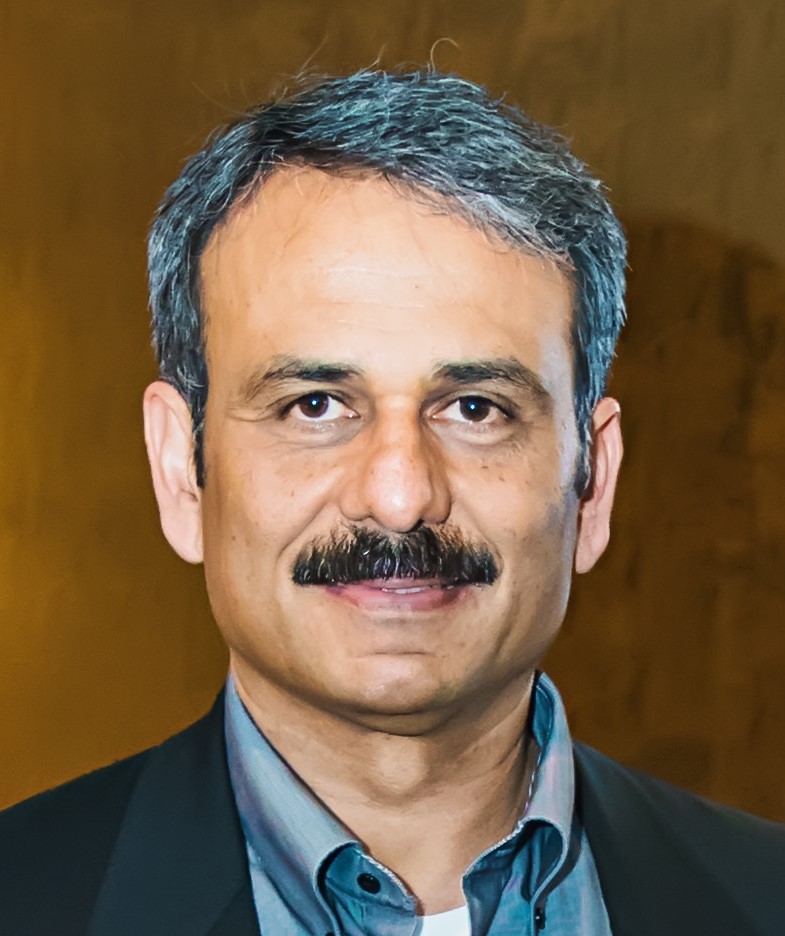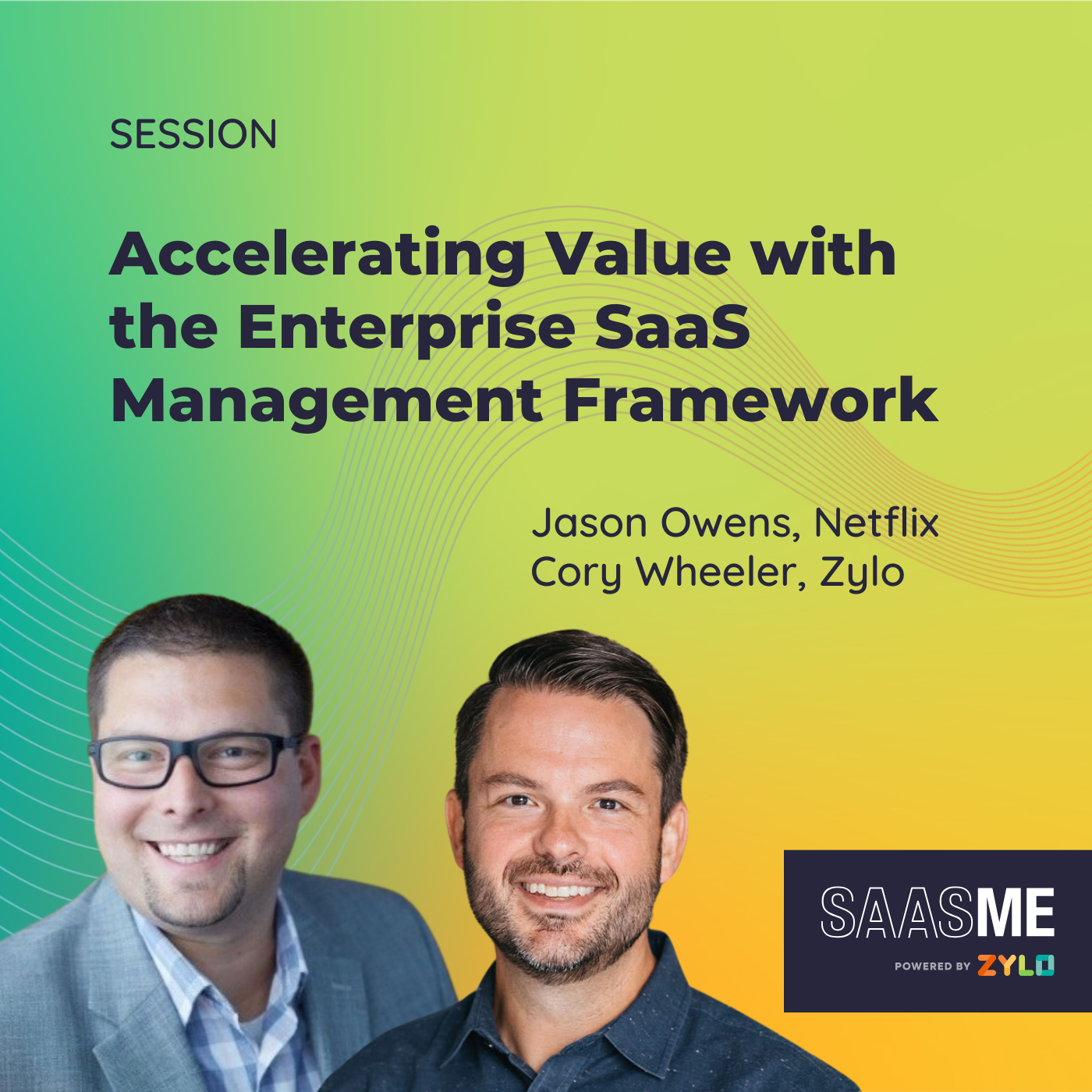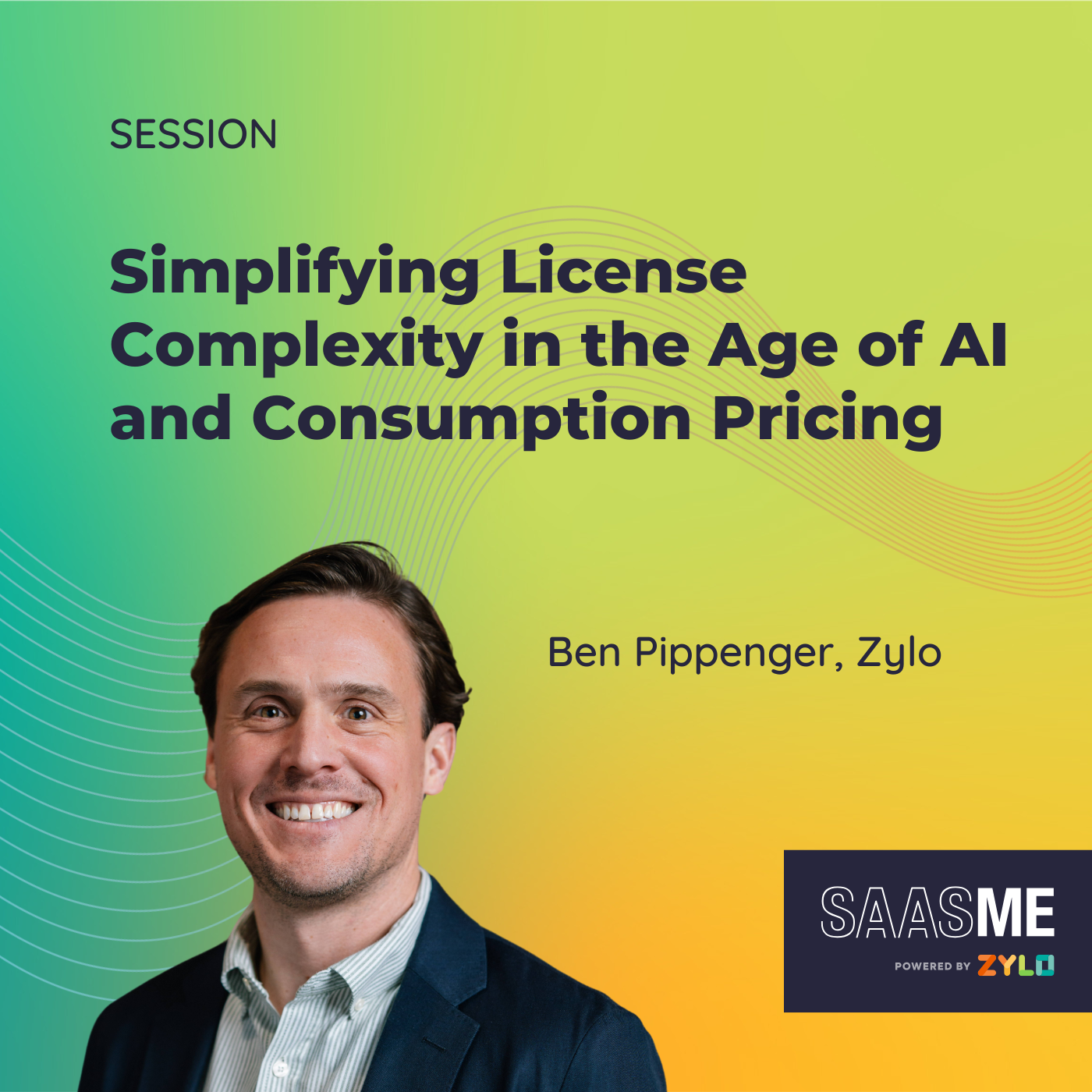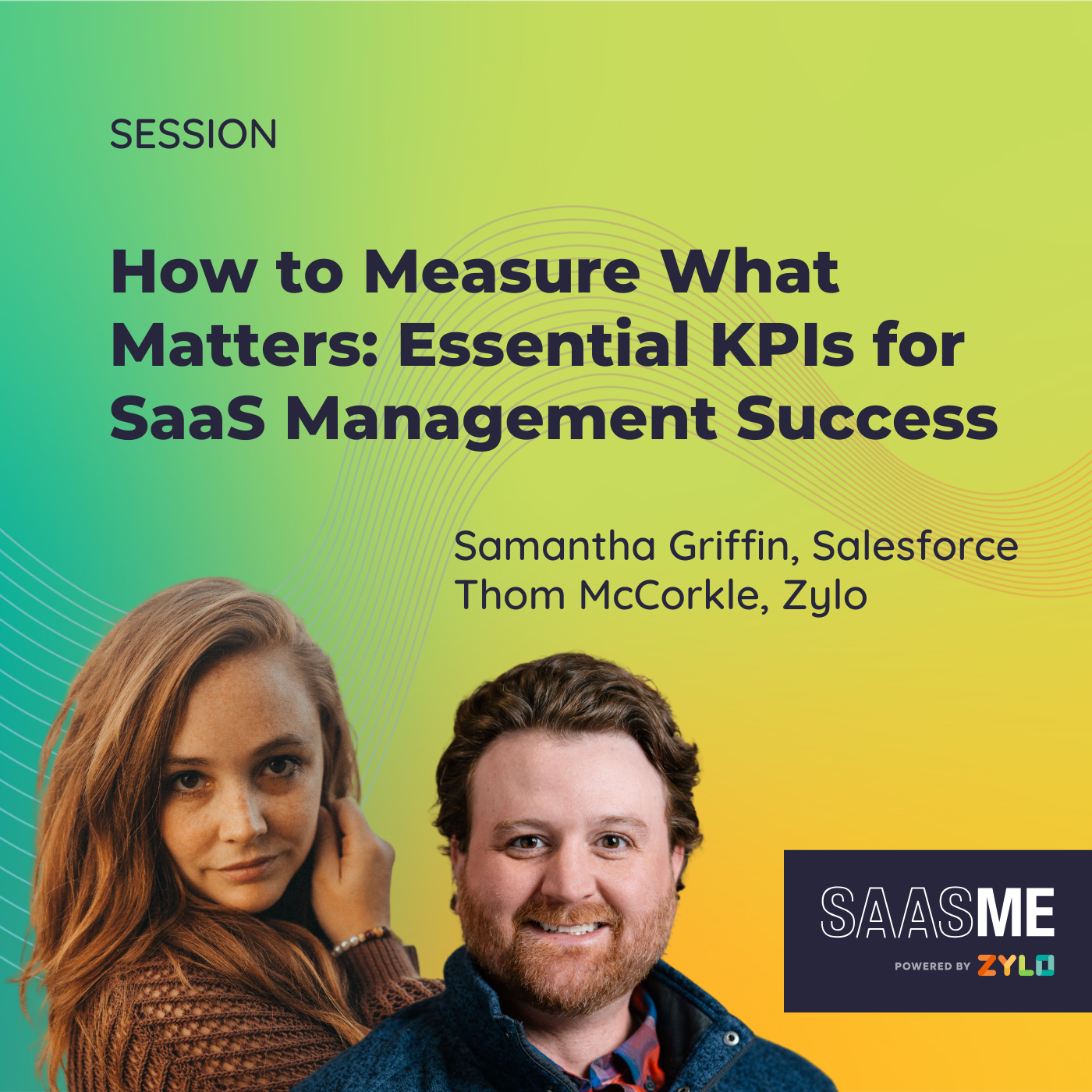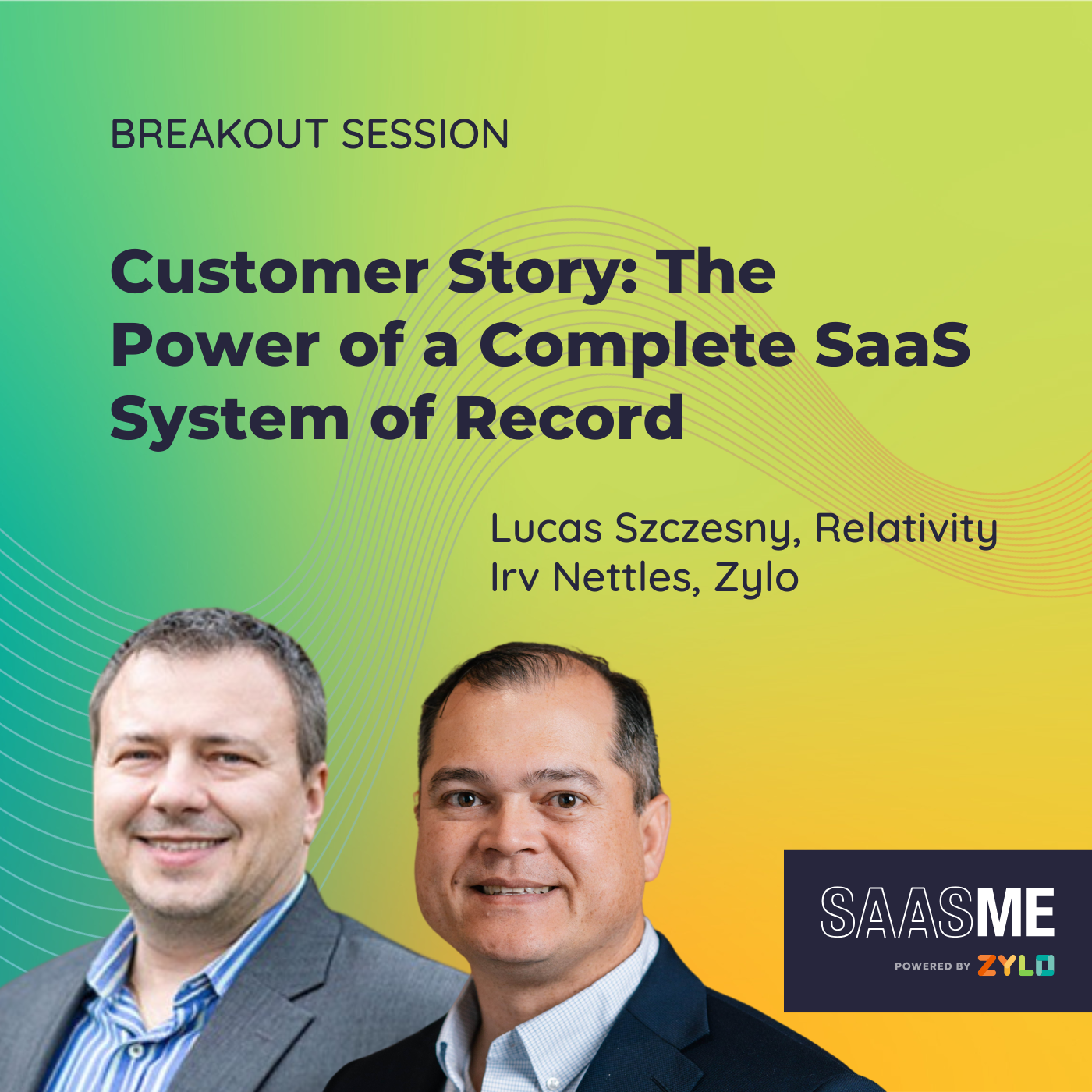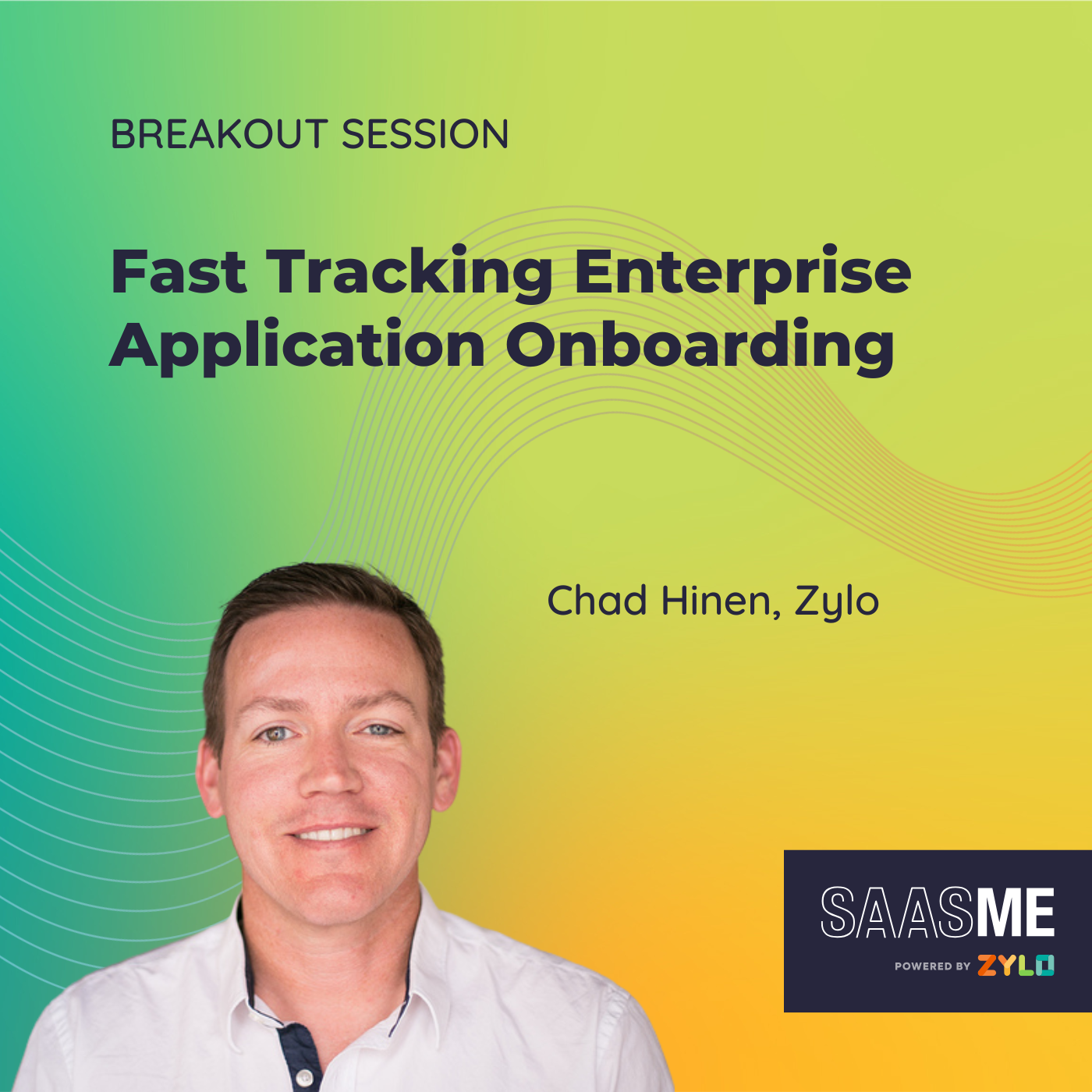Adobe: A Best-In-Class SaaS Management Journey
- 0.5
- 1
- 1.25
- 1.5
- 1.75
- 2
Cory Wheeler: Welcome, everyone. It's great to see everybody joining SaaSMe today. I'm Cory Wheeler, Zylo's chief customer officer. I have the great pleasure of working with some of the most progressive organizations in the world, tackling the biggest challenges around software, management, employee efficiency. Today's a really special day for us to not only bring together the industry, but also bring together our customers, to share their experiences and perspectives on the SaaS management space. And so, at SaaSMe, today, we're off and running with great content already. Byron Deeter's session was incredibly informative around transformative SaaS growth. And Eric's sneak peak at our SaaS management index is a great preview into a lot more content and detail we will share later on this year. At the end of this discussion, we'll have a few minutes left for follow up questions. If we can't get to all of those submitted questions, we'll follow up directly after the show. So with that, I'm very excited to introduce one of Zylo's most strategic customers to share their very impressive SaaS management journey. They were the first company and team that our internal team thought of when SaaSMe was coming together earlier this year, because we really wanted to be able to showcase a customer that has taken SaaS management, driven the implementation in those outcomes, and really then taken it to the next level. And that's what Adobe has done. So Adobe started their journey with a very clear need for SaaS visibility, and we're going to be going into that a little bit. But in the three years since SaaS management began internally in their organization, they've driven a major internal initiative that ties together many different facets of their organization, SaaS employee requests, inventory management and fulfillment, continuous optimization and rightsizing, and central visibility of all of their SaaS and on- prem licensing in a single location. And on top of that, they are both incredibly talented individuals. They're fun partners to work with as they look to balance employee satisfaction and efficiency while also driving bottom line value. So without further ado, I'm very excited to introduce to you guys Ash Rai, the director of the office of the CIO at Adobe, as well as Lupe Banuelos, a senior program manager in the software asset management organization. Lupe and Ash, take it away.
Ash Rai: Thank you, Corey, for the kind words you shared about Adobe and the two of us. So once again, my name is Ash Rai. I'm a director, the office of the CIO at Adobe. And along with Lupe, we'll be sharing our exciting SAM journey and how Zylo is a critical partner who helped us in furthering our program. So my team is responsible for two major programs at Adobe. One is software asset management, and strategic vendor relationships. They may not seem to be something that go together, but believe me, it has been really helpful having these two programs under one leadership. So first, let me talk about why SAM. So what prompted us to start the SAM program was, we were hit with a plethora of audits. This was about five years ago when I joined Adobe. And these audits are time consuming, as you guys are aware, we've dealt with audits, they suck up so much time and energy and resources. And it's like a fly which is not going to go away till you really take care of it, squirt it and kill it. The other thing that really bothered us was uncontrolled software spend. And we had to constantly go and ask for more money, which does not put you in a happy place with your leadership. And then lack of users data. We had no clue of what was installed, how many products were being used, how many users were there, and that was causing all kinds of problems to us. And so, that basically moved us to think about starting our SAM journey. Can we move to the next slide, Corey, please? So in 2016, before I joined, an RFP had already been floated. And we had down selected three or four vendors. And based on what we had seen, and I've done SAM in the past, so based on my experience, I leveraged that and we chose one of the providers who we thought was going to help us in this journey. And we did a POC with them to handle an audit situation. I'm not going to name the vendor, but you know the suspects. And we were successful in dealing with the audit. And we kicked off the program the POC led to. And the good thing was we had established a relationship of trust. And that is how you build partnership with your vendors. And we told them that if they were successful in meeting our needs, we are going to go and sign a commercial agreement with them. And we did. And all the work that was done was leveraged. We did not have to throw it all away and start all over again. But come 2018. And again, we had to go back for more money. And the need for SaaS monitoring became very, very clear. So where do you go? We went to Gartner and said," Hey guys, what should we be doing? Who are the critical vendors in this space who can really help us?" Because our traditional SAM vendors were unable to meet our needs. They had point solutions for specific products, but what we needed was a comprehensive SaaS solution. And we were introduced to Zylo. And again, we told them that if you want to be a partner, you have to work with us. We have to trust each other and move forward. And today we are at a place where Zylo has helped us tremendously in moving the program along. So let me share with you the keys to success for any SAM program or any program. One is, the first and foremost is executive sponsorship. I cannot stress enough the importance of having an executive behind any program. And for SAM program, since we work in the office of the CIO, this is supported directly by the CIO, and it helps you a lot. But believe me, it comes with a lot of scrutiny and reporting and you got to be on your toes. The second thing we realized is, we need people, process and tools to support this program. And we did everything possible with, initially we had limited resources, but since then the team has grown. And you got to do all. The other thing is, you need tools to manage discovery, entitlements, license positions. That's where the on- prem vendors, SAM vendors are important. And the SaaS vendors are even more important because the entire SaaS space is still evolving. It is fairly new. And for people to be able to go swipe their credit card and bring a tool in your environment, it is scary. And there is no real way for you to measure and report. And that's where Zylo came in and helped us in a big way. And we are eternally thankful to them for this partnership. Now, there are other things that you have to think of when you talk about success. One is, you have to start thinking in terms of software standards. I mean, within a couple of years, we saw our software landscape grow from a thousand products to about 2, 400 products today. And the other thing is compliance reporting. How do you make sure that you remain compliant with your obligations to your publishers? And we are ourselves a software company. And we hate it when somebody exploits our decency, I would say. And that's why these audits, audits are there for a purpose, because I would say that, to a certain extent, organizations do cheat. They try to leverage as much as possible till they're caught and they're asked to explain the usage. And it is not a pretty place be in when you have to shell out millions of dollars. Vendor management, again, becomes a very, very important aspect. You've got to understand your licensing. You've got to know what you're doing, and whether you are appropriately licensed, whether your agreements are going to support you. And this is even more important in the SaaS world. And you got to stay on top of your renewals, and make sure that you clean up your house, otherwise you'll have to pay dearly for the excess usage. So you have to be constantly cleaning your environment for you to be able to successfully manage your entire software application landscape. The other thing is that you need a really good alignment between VMO and procurement. And license harvesting helps you realize the maximum revenue. Sorry, the maximum value from your program. Can we move on the next slide? So I will now hand over to Lupe. She's going to talk about the SAM journey with all the audience here. Lupe, please take it away.
Lupe Banuelos: Thank you, Ash. I'll be going into a little more detail of our SAM journey in these next two slides. At the very start, and even before our SAM journey, we had really strong executive sponsorship. As Ash mentioned, we had just gotten hit with multiple audits. So management was looking forward to quickly getting our SAM program off the ground. We began with implementing an on- prem tool, and increased staff to enable us to put those core consistent processes in place from the very beginning. We focused on the ones mentioned here on the left and the ones we felt were very important to address at the start. And those that would ultimately get us moving along the SAM maturity scale to dynamic SAM. Although we moved quickly to get an on- prem discovery tool and SAM tool in place, we still had challenges specifically around SaaS visibility. We didn't have a consolidated view of software spend and usage. And so consequently, we couldn't manage it. Our legacy tools weren't set up to filter by software type. So trying to get visibility into just SaaS was not something we could do. In addition, we had our credit card spend for software purchases in a totally different tool. We needed to find a tool that could accommodate us with this information, as well as provide services to help our small team operate. Like Ash mentioned, we then consulted Gartner and they mentioned they were hearing really good things about a company called Zylo. So in 2018, 2019, spring 2019, sorry, we started a POC with Zylo. And we finally had visibility into tools and spend by source, AP, expense, reseller, those purchases made through the VAs that we were working with. We had a breakdown of purchasing trends, this cost center, employees, departments. We could see upcoming root renewals plus highlights where outstanding agreements or attention was needed. And a big one that we were seeing were the number of redundant apps that were being used. For example, we had 40 plus PM tools that were being used in our environment, along with many other tools that had similar functionality. So the insights or data that the POC provided were something that we couldn't have been able to do ourselves. I mean, we couldn't have put a report or generated any kind of tool to give us the insights that Zylo has given us. So naturally, we moved forward with a contract with Zylo. And today we have 50 plus direct integrations into Zylo. We have 2, 400 plus applications, which we're looking to reducing to 500, roughly. We have an export API, which we're using to integrate with our on- prem SAM tools. So we're building a software source of truth with that integration. We have an import API as an alternative to Okta where maybe the vendor doesn't provide an API, or we can load data in through a manual process where the application has different types of license types, where we need to track a little bit more. So throughout these last two years of partnership, automation and best practices that have been put behind our Zylo implementation have greatly contributed to these insights that have become so valuable to us. So it has become evident, or it became evident early on in our implementation that with all the actionable data, the most critical insights were the exponential growth or the software crawl of SaaS products. So now Ash will share with you how we use Zylo to tackle this business challenge.
Ash Rai: Yeah. So thank you, Lupe. Let me share with you what is Nestware. So Nestware was a direct outcome of our partnership with Zylo, which provided us great insights into where the money was being spent, how it was being spent, where we had the areas that we could look at. And essentially, what we did was we adopted a portfolio approach because this, and I shared more about it. So Nestware is essentially a portfolio which consists of three programs underneath. One is a workspace store, which is a software catalog through which individuals can go and order the products they need. The second one is software optimization. So software optimization is really important because that is how we are going to reduce our number of software that we use from 2, 400. And we are targeting a roughly 500 plus minus, plus maybe another 100 to 200 applications. Then financial reporting and analysis. So this is where everything comes together. What we do here is essentially everything that we have done in the SAM program. There's a dashboard through which we report, which includes number of applications, number of applications that are procured through credit cards, so on and so forth. Can we move to the next slide, please? So if you look at this, the Nestware portfolio, basically what we are trying to share with you here is, the three programs help us analyze our software landscape, optimize it. And then the optimization is a direct result of consolidation. And we have done this in several areas. Like in the BI, we had probably a dozen tools and we have consolidated it down to three tools today. And that is used across all of Adobe. And we can now leverage our entire support staff, train them and use them on three applications versus those distributed over 12 applications. So you see how these synergies come to you and you can do more with less. Because now you don't need as many people to support those applications with the same number of people. You have economies of scale. You've achieved those. So software optimization, the basic thing is we want to reduce redundancy in application landscape for a specific category. And this is by consolidating titles, as I shared earlier. It also helps us optimize our spend. And this results in direct cost savings and cost avoidance. And we do this through license optimization, improving predictability of our OpEx spend and continued reduction in our employee software spend. Also, you cannot not focus on the risk and the compliance that is really critical. And software as a service is fraught with risk. We got to know where your data is stored, how it's stored, who has access to it, and what kind of protection the vendor provides you. You have to have proper contract terms available. I mean, in this day and age, I think security is the most important aspect of any kind of digital program that you have. Without proper security, you are leaving yourself open. You must have heard of so many issues that are heard of. Those ransom takeovers, et cetera, those are real. And then lastly, I don't want people to go and swipe credit cards and expose the company. And for that, what we have done is, we are eliminating credit card purchases all together. Can we move to the next slide? So I already spoke about software optimization and the critical pieces to establish standards. And you got to have a good relationship with all your stakeholders. And if you see here at the bottom, you'll see that we have involvement with procurement, vendor relations is my team, security, engineering, we have finance, legal enterprise architecture, then two loaners and all the employees. We are in it together. And we constantly communicate with them. Communication. In all of this, I've seen is communication is most important. We are not trying to step on each other's toes. We want to work as a team, work together. So if you have to take away one thing that you have to do is, bring everybody together so that people understand their role and why we are doing it. And this is a massive change when you go and take things away from people. You say," You cannot swipe your credit card." They need to understand why we are doing it. And what are the benefits for that? So let's move on to the next program under Nestware, and that is software catalog. So this basically provides all the employees one avenue to go and request software. They can go and see what is available. If something they need that is not available, they have the ability to go and ask for an exception request. And we'll take a look at it. We have category owners who understand that particular category very well. They will make a recommendation, and if you're still not satisfied, and you can come and demonstrate to us that your need is real, we will go and help you. Whatever software you need to get your work done, we'll make sure that is taken care of, and it's done in the right, thoughtful and proper manner, with proper contracts, proper oversight. And we onboard those vendors so that we can track usage. Can we go to the next slide? And the last thing is financial reporting and monitoring. And the basic principle that we follow within this program is, what gets measured gets done. So that's why we are measuring optimization, we are measuring license usage. And everything that goes with it is how much money are we saving through optimization, through license harvesting? These things are not mere words. We are actually doing it. It takes a lot of effort. So this program is not for people with low stamina. You need a lot of stamina to make this program successful. And you have to be added. We've been doing this for close to four years. And believe me, it almost seems like we just started yesterday. You'll never hear anybody talking about SAM so excited. But I'm telling you, it's an exciting journey for us. And we have partners like Zylo, who've been here with us through the journey. And we hope to take this relationship to another level. So let's move on to the next slide. So looking ahead, our ultimate goal is to achieve dynamic SAM capability. And this, we intend to do through optimized and automated software lifecycle management. And this includes, we have already shared software catalog, which is, we are trying to automate it as much as possible so that you request and you get your software in as quickly as possible, in some cases instantaneously. In other cases, if there is user record to be created, it takes whatever time, few hours or few minutes, whatever it takes. And also, the key goal is to make sure that unused licenses are recovered so that we don't go and spend money buying stuff that we already have available for you. Can we go to the next slide? So to wrap it up, I know we don't, I can go on and on, talk for hours about SAM program, but I think it's time to wrap up and share with you the core learnings we have. So first and foremost, like we shared with you, you need executive sponsorship. And also, you need cross- functional partnership within your organization, with other business units. And the more people you pull together, I'm telling you, the more successful you're going to be. Think big, but take small, incremental, achievable steps. Because if you're trying to boil the ocean from the get go, you're going to get disheartened. And again, fix only what is broken initially. You'll realize that duplication and redundancy are the main cause of inefficiency. So be deliberate in addressing those. Manage your software usage proactively. Create efficiencies that will allow you to realize value faster, and it'll help you save on the program. If you're saving millions of dollars and you go and ask for money, I'm telling you, there is no leader who's going to say no to you. And last but not least, leverage partners like Zylo and other SAM providers, whoever you choose, to make sure that they are in this together with you. If you try to do it alone, I'm telling you, you are climbing Mount Everest without any tools. And you know what happens then. And please remember, SAM is a never ending journey. If you think you're going to be done, you'll never be done. You have to continuously evolve. You have to continuously improve. And lastly, do not forget to showcase your wins. A dollar saved requires you to sell worth$ 7 of your products. The savings is that powerful. It's a 1: 7 ratio. So showcase your wins, celebrate and march along. If there are any questions, I'll be happy to answer those.
Cory Wheeler: Yeah, Ash. That was fantastic. I've got tons of questions, but we've got one in the Q& A that I wanted to throw out there as well, first off. Probably have time for two quick questions. How did you approach the subject of access management internally? And the clarification was provided that, because a company can have dozens or hundreds of SaaS vendors, all with their own specific user permissions within the platform, how did you approach the issue of some employees with specific titles having specific elevated access in some platforms, while others have basic user access or no access at all?
Ash Rai: So again, that is something that you have to figure. When you are deploying any product, you have to have that knowledge of what people need to do. And the view only user versus platform users, that's a cost advantage also. And that is what you have to do. You have to understand what people are doing. And we are tracking that how many times a person is logging in. If you log into the program or to the application once a month, you are not a heavy user. You are probably just viewing it. So you have to interview, you have to build processes, you have to build questionnaires to figure out what people need. And that's why you have multiple types of license usage. And before you go and enter into an agreement, you got to know what you want from the platform, what kind of users do you need? And you can go negotiate. We have negotiated a number of cases where viewing is free. We don't pay for viewing of the data. Until and unless you are interacting with the program, there should not be any cost that you should incur to the vendor.
Cory Wheeler: Yeah, that was fantastic. Quick follow up question. You guys, both you and Lupe hit on executive sponsorship really heavily. Having your CIO on board as you guys are launching Nestware. And Nestware is a massive project, feeding data from your catalog to your inventory management, resellers down to Zylo, out then into your SAM tool. It's a big enabler to be able to pull off something that big. So for your CIO, how do you report and measure value back to your CIO? I think that was a question in the chat as well. And then what are the things that she cares about most as you guys are rolling out, Nestware internally?
Ash Rai: So I think the most important aspect in all of this is knowing what you have and how you're using it. And we report on them. So initially we started harvesting licenses on a quarterly basis. We realized that quarterly was too late. So we started doing it on a monthly. Now with the advent of the software catalog, every time a request comes in, or every time an employee leaves, we recoup those licenses and they're back into our inventory. And anytime a request comes, at that point, we do an automatic check. We see what is in the inventory. And if nothing is available, we will run any licenses available, depending. We have a policy for each product. In some cases, if in 30 days you have not used the product, we'll take the license away. You need it again. You can come back and request. In some cases, it's 60 days, 90 days. Again, it's driven by the business unit that owns that product and how it's being used. But those policies are in place. And then we are building automation for many products. And that's why I said it's a continuous process.
Cory Wheeler: Yeah. I really appreciate that, Ash. And amazingly enough, we're short on time. So thanks to both you and Lupe, as well as the full Adobe team for all of your hard work.
DESCRIPTION
Adobe is known for its cloud-forward, progressive stance, yet, like most organizations, struggled with gaining visibility into their scattered SaaS investments. In this session, you’ll learn how they built a mature, state-of-the-art SaaS Management system of record, tying SAM and SaaS into a single dashboard for optimization, rationalization, and tracking.
Today's Guests

Lupe Banuelos
